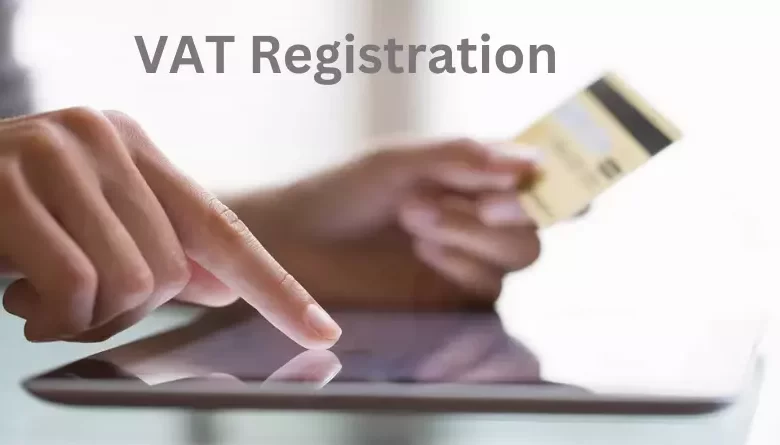Essential Guide: VAT Registration for Small Businesses

How is VAT calculated, and who bears the financial responsibility for it?
VAT, or Value Added Tax, is a type of tax on things you buy and services you use. It started in the UK in 1973 and is now a big source of tax money for the government, just after Income Tax and National Insurance.
Even though consumers are the ones who pay the VAT when they buy things, it’s the businesses that sell goods and services that actually hand this tax over to the government. They include the VAT in the prices they charge and then pass it on to the state.
In the UK, the standard VAT rate is 20%, but some items and services qualify for a lower rate of 5%, or even a 0% rate (but you have to declare them). Some items are entirely free from VAT.
So, in simple terms, when you buy stuff, you pay the VAT, but it’s the businesses that collect it and pass it on to the government.
UK VAT Registration: Who Must Register?
Basically, any UK business with a taxable turnover of at least £85,000 in a single tax year must sign up for VAT and pay it. As of 2021, the FSB estimated that about 2.7 million businesses in the UK private sector have already registered for VAT, making up nearly 48% of the total business population.
If, by the end of a 12-month period, your business’s turnover exceeds the £85,000 threshold, you have one more month to register for VAT with HMRC. But don’t worry, the process is usually straightforward for most businesses, and we’ll provide more details on how to register in the future.
For businesses based outside the UK that sell to the UK market:
Regardless of your turnover, there’s a situation where you still must legally register for VAT. It’s mandatory if any of the following conditions apply to your business:
1.We (the entrepreneurs) have a location outside of the UK.
2.Your company is located outside of the UK.
3.You provide goods or services to the UK, or you plan to do so in the next thirty days.
For businesses with an annual taxable turnover of less than £85,000 for the year: Every UK company, except those exclusively selling products exempt from VAT, has the option to register for VAT, even if their revenue is less than the £85,000 threshold. But why would you choose to register? How do you decide if it’s the right choice for your company?
The benefits of voluntarily registering for VAT include:
1.Businesses can reclaim VAT on business expenses.
2.If you’re approaching the turnover threshold, voluntary registration can prevent penalties for not registering on time.
However, there are downsides to registering for VAT on your own:
1.If you register for VAT, you have to pay the tax on every transaction made through your online retail business.
2.Adding the VAT amount to your prices can make your products or services less cost-effective.
How to Apply for VAT Registration?
Most of the time, companies can apply for VAT registration online. However, in specific situations, you might need to apply offline, particularly when:
1.Requesting a VAT registration exemption.
2.Managing multiple business units registered under different VAT numbers.
3.Enrolling in the Agricultural Flat Rate Scheme.
You can choose to apply for VAT registration by yourself or hire an accountant to do it on your behalf.
To apply for VAT registration through HMRC, you’ll need the following:
1.Contact details for your business (address and phone number).
2.Details of your business bank account.
3.Unique Tax Reference (UTR) number.
4.Information about your turnover and how your company operates.
5.Your Government Gateway ID and password.
How Long Does it Take to Register?
The process is generally straightforward, but it may take up to one month for HMRC to complete your registration and send you a Tax certificate. While they aim to complete 70% of registrations within ten business days, the actual timeframe can vary.
Once registered for VAT, you’ll receive an invoice that serves as proof of your VAT status. This invoice should include:
1.Your VAT number (which you must include on every invoice).
2.Details of your first tax return.
3.The effective registration date (the date you registered, not the date you received your VAT certificate).
You can access your VAT certificate online through the HMRC account, accessible via the Government Gateway login.
Choosing the Right Accounting System for VAT Calculation:
There are four main accounting methods that businesses can use to meet their VAT obligations:
1.Standard VAT Account:
•This is the traditional method where you record the VAT you pay for each sale and the VAT you pay for each purchase.
•You file a VAT return with HMRC every quarter.
2.Annual VAT Account:
•Certain businesses can file a VAT return only once a year, but they still need to make quarterly payments based on previous returns.
3.Flat-Rate Plan:
•Some small businesses skip detailed accounting and pay a percentage of their revenue in VAT.
•Consult with a professional accountant to see if this is suitable for your business.
4.Cash Accounting System:
•With cash-based accounting, VAT is presumed to be paid or collected when money changes hands, not necessarily when the invoice is paid.
Cancellation of VAT Registration
If your business is no longer eligible for VAT registration, you must inform HMRC within 30 days to avoid potential fines. This typically occurs when your company stops trading or ceases to sell VAT-taxable items. For assistance with financial management, consider reaching out to Account Ease, where a team of professional accountants can help streamline your finances.




